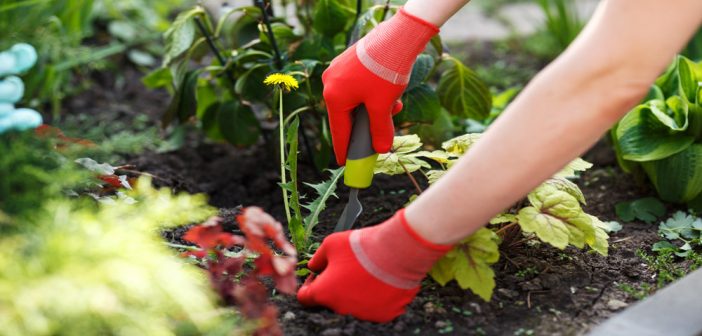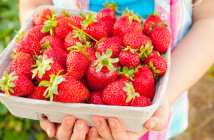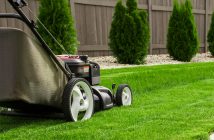If you have a garden, early summer, means weeding. While you may not be able to fully get away with the chore of weeding, there are a few tips to reduce the number of weeds in your garden and keep your plants healthy and happy.
Mulch
Providing a mulched covering for your flower and vegetable garden will reduce the number of weeds that can sneak their way into the beds. Mulch not only keeps the weeds at bay but also gives your plants a good source of nutrients. There are several kinds of mulch you can use.
Organic Mulch
If you have pine needles or a bunch of trees around, gathering up the dead leaves and needles to use as mulch will be much cheaper than buying pine straw bales from your garden or landscaping store. Leaves also have the added benefit of making good compost.
Wood chips also make good mulch. Mixing them with soil is a no-go but providing a layer on top will crowd out any weeds. As the wood chips break down, the microbes fight off any bugs and fungi that try to get your plants as well.
Cardboard and newspaper can be a good mulch base. Newspapers can be easily used on top of the soil – just add some mulch, wet it down, and you’re ready to plant. Cardboard is trickier, because you can’t tear holes in it easily. However, cardboard can used for walkways or to prepare a new bed in the spring. Layering wet cardboard, newspaper, and soil on top of each other will kill the grass and weeds underneath. All of it is NOP certified and composts beautifully. Do this two months ahead of planting and you’ll have a new bed ready to go.
Inorganic Mulch
Inorganic mulches include black plastic and landscaping fabric. Layering them over your beds and covering them with about 2 inches of organic mulch will smother any weeds that try to creep in. However, since inorganic materials don’t compost, they have to be taken out and redone every year before planting.
Stop Tilling
While this is a pre-spring planting chore, prevention is better than fighting the never-ending battle. Even though we think tilling garden rows makes it easier to plant our garden, it also mixes weed seeds back into your soil. Instead, mulch your garden beds and prepare them ahead of time. Use the cardboard/newspaper trick to help smooth out any grass and weeds so you can create a ready to use compost.
Vinegar and Boiling Water
Instead of turning to herbicides and pesticides, turn towards the distilled vinegar in your kitchen cabinet. Plants hate vinegar and the acidity will kill off any weeds it’s applied to. Just don’t spray it on your tomatoes or beans; you don’t want to lose plants you’re trying to grow.
If you don’t have vinegar, use boiling water. Boiling water will instantly wilt and kill any plants it’s applied to, so be careful when pouring.
Learn How to Identify Friend from Foe
Sometimes the weed you’re pulling that you think is a weed is actually a wildflower or plant that attracts bees. Sometimes, it’s actually super invasive or poisonous and needs to hightail it out of your garden anyhow. Learn how to identify the natural flora growing in your backyard. Look online or at your local agriculture extension website to find out what weeds grow in your specific region and whether they are poisonous or not.
Eat Them
Some of the weeds in your garden or even backyard have many health benefits. Dandelion buds can be used to make wine, jam, and tea while the greens can be used in salads. Stinging nettle can be dried out like other herbs and is beneficial for anemia, congestion, and diarrhea.
Learning what weeds can be eaten can help spice up your salad or tea mixtures while giving you some added health benefits. But do your research before you start seriously considering picking weeds for eating or drinking. Learn everything you can and make sure you can identify wild plants properly.
10 Minute Walk-Through
Set aside ten minutes each day to walk through your garden and pick the weeds. This will go a long way in keeping your garden weed-free. Not only will this help keep your beds weed-free, but you’ll be able to keep an eye on any problems your plants might be having, such as rot, fungi, or parasites.








